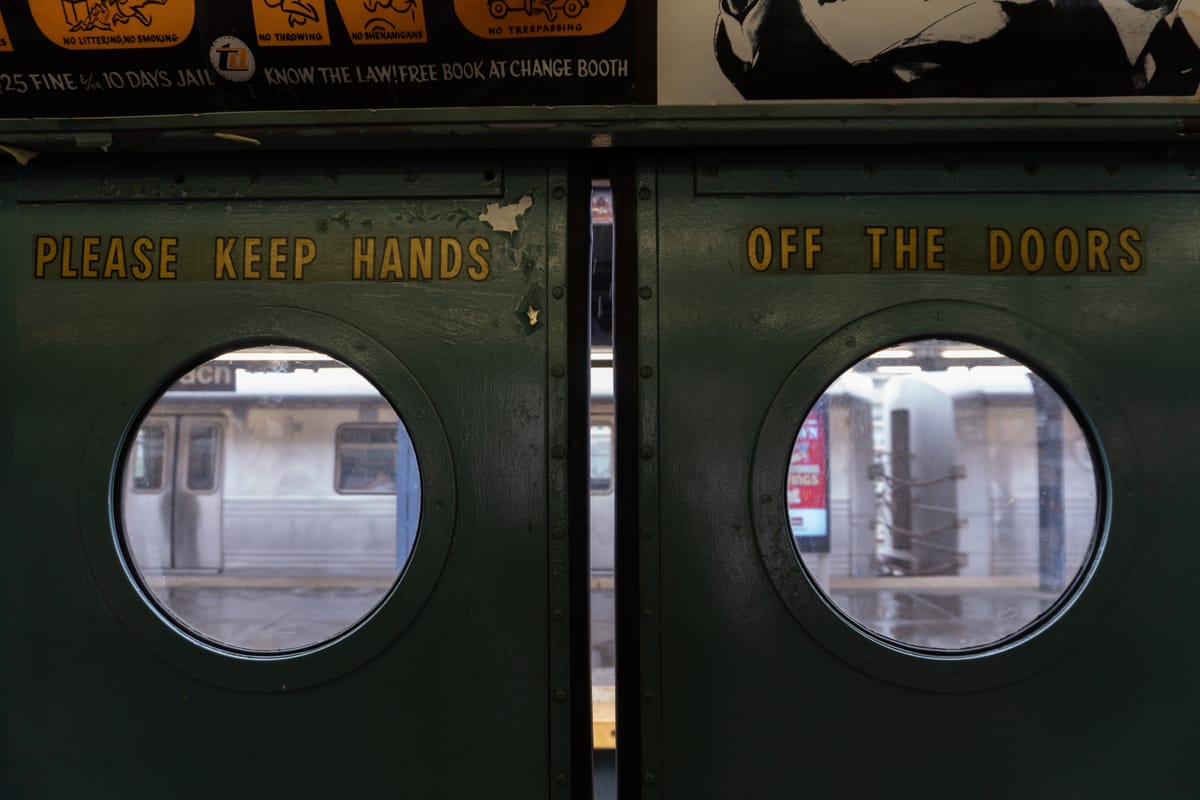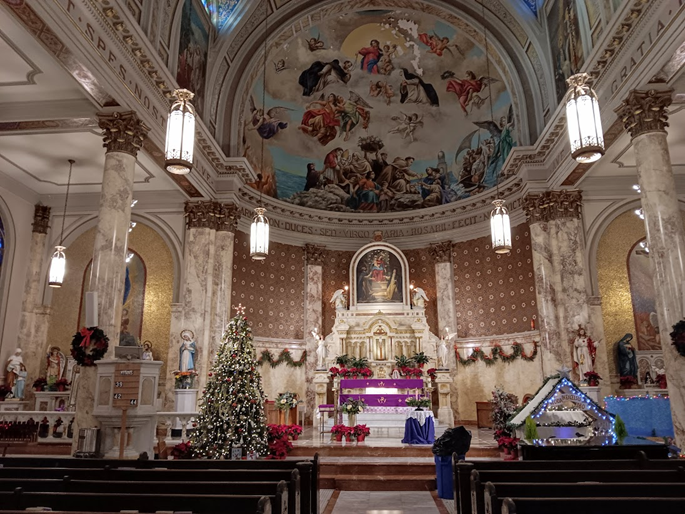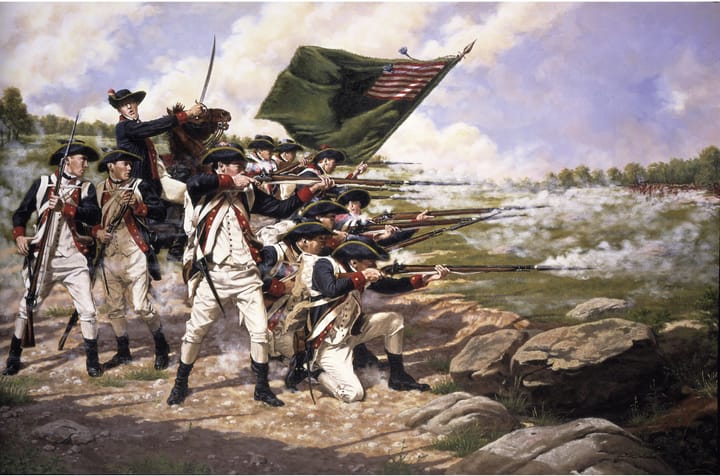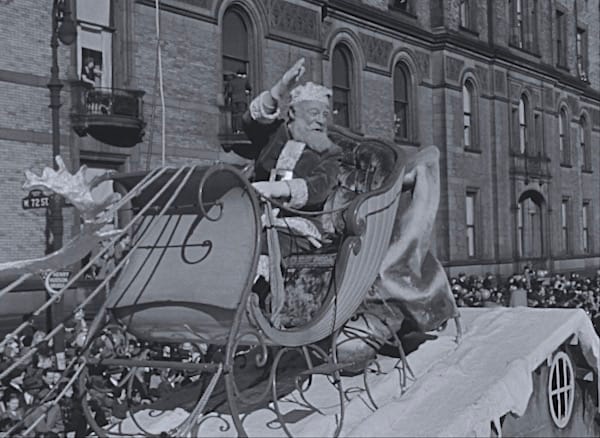The Transit Museum's 'Parade of Trains' is the best kind of time travel
The run of vintage trains is a sleeper hit event of the summer

For my money, the New York Transit Museum is one of the best parts of being a New Yorker. Besides the year-round physical museum, the organization regularly hosts free and paid events around the city’s subway network, including several nostalgia rides that include paid excursions such as the upcoming day trips to Coney Island and Rockaway Beach. The Transit Museum’s most famous event is of course the annual Holiday Nostalgia Train (you can check out our video on it here).
But this summer, for the first time since 2022, the museum brought back a personal favorite of mine: the Parade of Trains. The event is exactly what the name implies: the trains are interactive parade floats that run in a loop from Kings Highway to Brighton Beach on the Q line for one weekend in the summer, serving anyone from the community of train lovers to the average native New Yorker. Not as many people have heard of the Parade of Trains as the holiday trains, but the event has quietly become a highly of the summer; I spent both days of this year’s event, June 7 and 8, riding the rails.
The weekend the parade took place was one of the busiest you can find in a New York City calendar year. It felt that no matter where you went, there was a party. You could’ve gone to a carnival in Astoria, or the Puerto Rican Day parade in Midtown. This didn’t have loud music or people partying, but the atmosphere did still feel like a parade, with people crowding the train doors to try to board, others taking photos and some even just sitting down on a bench and staring in awe as the trains ran back and forth.
These trains are different from the ones you’d see every year on the Holiday Train. This year, they ran three distinct train sets with their own personalities. The wooden BU Gate cars came into service as early as 1903, the same year the Wright Brothers took flight. The BU Gate cars are actually too old to run underground, they have to be run outdoors since they were designed to run on elevated railroads. The newest train cars, the R32s, ran in regular service up until 2022.
This is the only event where I can experience my own lived era of train nostalgia.
Last but certainly not least, The Train of Many Metals is not just one single car design, but a train that features several units introduced from the 1940s-60s, trains newer than all the other nostalgia rides that normally run, but are still charmingly retro. It was a diverse group though: the newest train cars, the R32s, ran in regular service up until 2022.
A highlight of the weekend for me was going to a stop that the parade didn’t serve, Sheepshead Bay. Since trains run on the express track from Kings Highway all the way down to Brighton Beach, there are several stops that the trains bypass. Sheepshead garnered a crowd because it is normally an express station, and the platforms end up being very close to the express track. This gives the biggest fans of the trains an experience they can’t get at any other station, the sights and sounds of a vintage train speeding right past them.
The station is usually sleepy, particularly the Coney Island bound side; this is the end of the line and rarely has more than a couple people waiting for the Q’s final few stops. When I got to this platform during the parade, however, there were people positioned at the far edges of the platform, their cameras ready. Spectators were running to tell their friends when the next train was coming, like paparazzi on the red carpet. The Manhattan-bound platform had more people who were there simply to commute, and conversations were a mix of people questioning why there were mysterious trains skipping their stop, alongside the self-styled experts beside them discussing the intricacies of transit infrastructure in between filming.
There is a different thrill seeing trains this old pass by you, and it’s a social occasion in itself for train lovers. People gather at different spots, trying to get the best shot as the trains continually pass by. There are all kinds of cameras, from all eras and of all uses: everything from phones, to vlogging cameras to professional grade photography equipment. These are memories preserved forever, both in the minds of stunned bystanders and the photos of trained train professionals. There are people who film the rides for others online, crowding the front and back windows of every train and walking through every car to ensure that it is properly documented. But aside from the seasoned veterans, this event draws families. Children who are obsessed with trains bring their favorite train toys to the real thing, there are others who are learning about what the past used to look like from their parents, and teens meet up with their friends to ride together.
Unlike the Holiday Train, the parade made nostalgia much more accessible. The Holiday Train cars definitely have a loyal following, but they were retired decades ago. I never knew them from being in regular service; they were nostalgia that I was born with. The R32s are my lived nostalgia, as I rode them regularly growing up. They went from daily sights to a special occasion for me after their retirement in 2022. Seeing them again for the first time in years was comforting, I felt like I was returning to a different era of my life.
In all my years of riding nostalgia trains, I’d never experienced this particular sensation before. Walking back into the fluorescent lights, seeing the hard navy blue benches took me back again. I remembered being a toddler, sitting on my knees, looking out the very large windows while cruising up Eighth Avenue. Considering this train ran until very recently though, I wasn’t the youngest person reminiscing during our ride on the R32. During the heart of the COVID-19 pandemic, as the world halted, these workhorses continued to run.
The R32s have been the foundations of New Yorkers’ train fanaticism for decades and our youngest generation holds deep nostalgia, even if they only rode them for a brief period. The same could also be said of the AB Standard cars, which ran up until 1969. So a 100-year-old and a 70-year-old could experience the same feeling, and both be reminded of what they feel was a simpler time.
This is a rare opportunity to enter a space and feel immersed in a bygone era, in a parade of museum pieces in which there are no missing details. Many of these trains have been restored to their original forms after undergoing overhauls while they were still up and running. But these train cars were also forgotten about, and many were destroyed and some left to rot in storage until the New York Transit Museum and a team of dedicated team lovingly restored them to their former glory (or something close to it). This goes from things as significant as restoring and repainting the exterior to details as miniscule as ensuring the ads are period appropriate. On the BU Gate cars, the trains are built as a communal space, a far cry from the recent designs that eliminate the so-called “conversation seats” altogether.
Our modern trains and modern amenities allow us to commute in a bubble. In fact, being in your own bubble is glamorized. If you were a commuter riding these BU Gate cars, you were sitting in a space geared more towards conversation, no AirPods in sight. If you’re sitting in the diner-style booth seating with friends, conversation just flows.
These trains have seen a lot of changes. The oldest trains, the BU Gates and A/B standards, were created by people who were born in the 19th century, and now are being ridden by people born in the 21st. There was a time when these were the sign of a new era of New York, innovations in travel that turned New York City into what we now know it to be. Then, the way we build trains changed. The steel used became stainless, the plush seats became benches, the subway maps became screens. These trains became outdated, annoying and fragile relics that needed to be replaced immediately.
Funnily enough, in 2025 the trains that were once seen as fragile and outdated have become iconic pieces that people come from all over to see in order to feel some sort of connection to a long lost city.
These are the cars of our childhoods. For almost every New Yorker who lived here from the end of World War II until 2022, you would have at the very least seen one of these train cars.
Stepping back in, the old sights, sounds and smells directly hit your brain. This is why the Parade of Trains is special to me. I’ve spent a lot of time on trains that were retired long before I was born, but this is the only event where I can experience my own lived era of train nostalgia. The parade is for more than just me though, it is a collective moment. New York City is special for its ability to bring people together, and these train events are even more special because people who are just there to commute are experiencing the vintage train alongside the diehard enthusiasts who came out just to see them. There’s also something particularly special about how excited people are at something that could be seen as purely utilitarian.




Comments ()